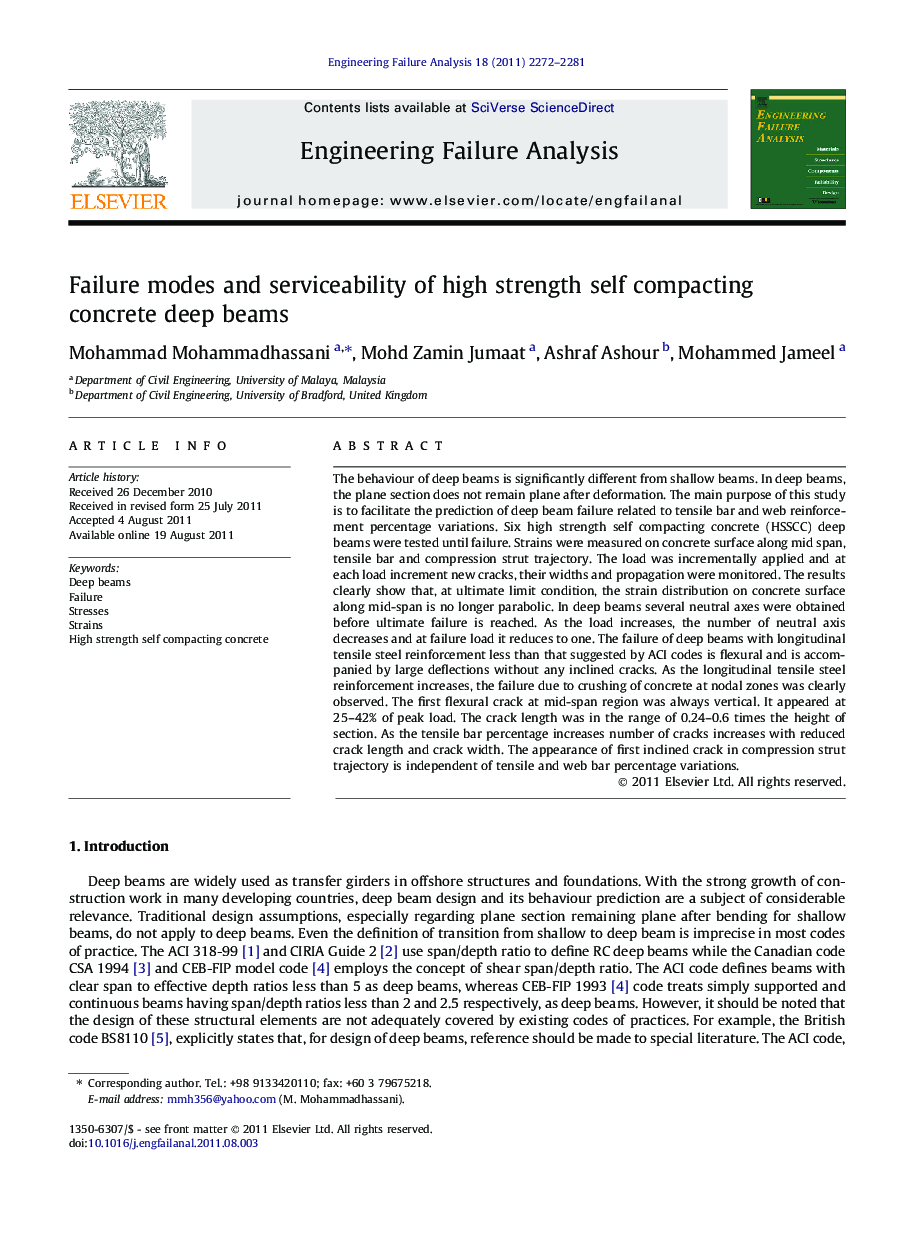| Article ID | Journal | Published Year | Pages | File Type |
|---|---|---|---|---|
| 768990 | Engineering Failure Analysis | 2011 | 10 Pages |
The behaviour of deep beams is significantly different from shallow beams. In deep beams, the plane section does not remain plane after deformation. The main purpose of this study is to facilitate the prediction of deep beam failure related to tensile bar and web reinforcement percentage variations. Six high strength self compacting concrete (HSSCC) deep beams were tested until failure. Strains were measured on concrete surface along mid span, tensile bar and compression strut trajectory. The load was incrementally applied and at each load increment new cracks, their widths and propagation were monitored. The results clearly show that, at ultimate limit condition, the strain distribution on concrete surface along mid-span is no longer parabolic. In deep beams several neutral axes were obtained before ultimate failure is reached. As the load increases, the number of neutral axis decreases and at failure load it reduces to one. The failure of deep beams with longitudinal tensile steel reinforcement less than that suggested by ACI codes is flexural and is accompanied by large deflections without any inclined cracks. As the longitudinal tensile steel reinforcement increases, the failure due to crushing of concrete at nodal zones was clearly observed. The first flexural crack at mid-span region was always vertical. It appeared at 25–42% of peak load. The crack length was in the range of 0.24–0.6 times the height of section. As the tensile bar percentage increases number of cracks increases with reduced crack length and crack width. The appearance of first inclined crack in compression strut trajectory is independent of tensile and web bar percentage variations.
► Tensile steel reinforcement below ACI limits fails flexurally minus inclined cracks. ► First mid-span flexural crack is always vertical and at 25–42% of peak load. ► The crack length is in the range of 0.24–0.6 times the height of section. ► First inclined crack in compression strut is independent of reinforcement bar ratio.
